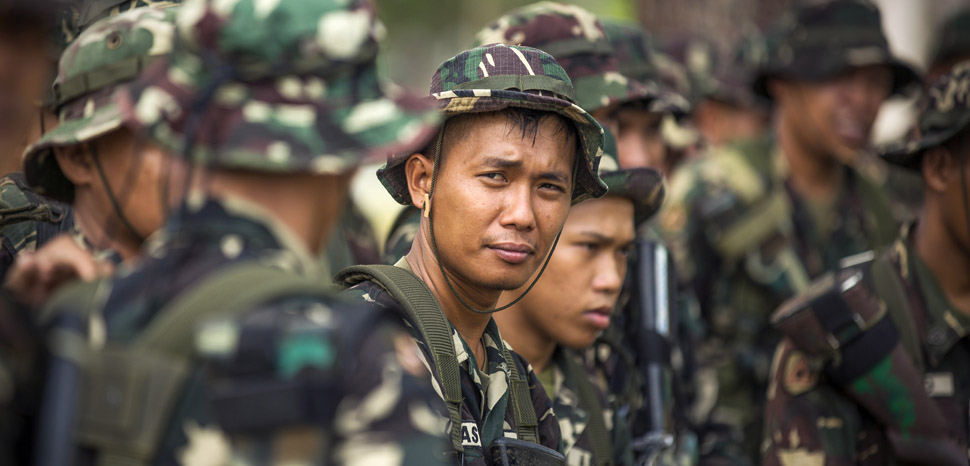On July 27, firebrand Philippine President Rodrigo Duterte mooted the idea of holding peace talks with the notoriously brutal militants of Abu Sayyaf for the first time since he came to office. During a speech in Jolo – the bustling main town at the heart of the militants’ remote maritime stronghold in the Sulu archipelago – Duterte, referencing his own southern roots, declared: ‘now, you have a president with Moro blood… let’s just talk’. Duterte repeated: ‘let’s talk – or what are we going to do; kill each other?’
Four days later, a powerful bomb hidden in a van exploded at an army road checkpoint on the nearby island of Basilan, killing eleven people instantly and leaving at least seven others wounded. Military spokesperson Col. Edgard Arevalo quickly assigned blame to a local faction of Abu Sayyaf affiliated to the Islamic State. The blast – later revealed to be a suicide attack – was followed by a surge in activity by the group during August, including an attempted piracy attack and renewed clashes with the army.
The recent spike in violence indicates a shift away from signs that Abu Sayyaf had entered a steep decline since last year’s Marawi siege, when its most powerful faction – led by the now-deceased Isnilon Hapilon – was wiped-out in a five-month offensive by government forces which ended last October. In the time since, the group has rarely made headlines beyond its remote island hideouts.
Abu Sayyaf is in the headlines once again. And it may be no coincidence that its re-emergence into the public consciousness comes at a time when Duterte has been focused on finalizing a years-old peace deal with the more moderate Islamist rebels of the Moro Islamic Liberation Front, based just across the water on the larger southern island of Mindanao. Do the signs of life in Abu Sayyaf indicate a coordinated and resurgent campaign aimed at disrupting the peace process? Or are recent attacks a desperate cry for attention as the once-powerful militant group fades into obscurity and irrelevance?




